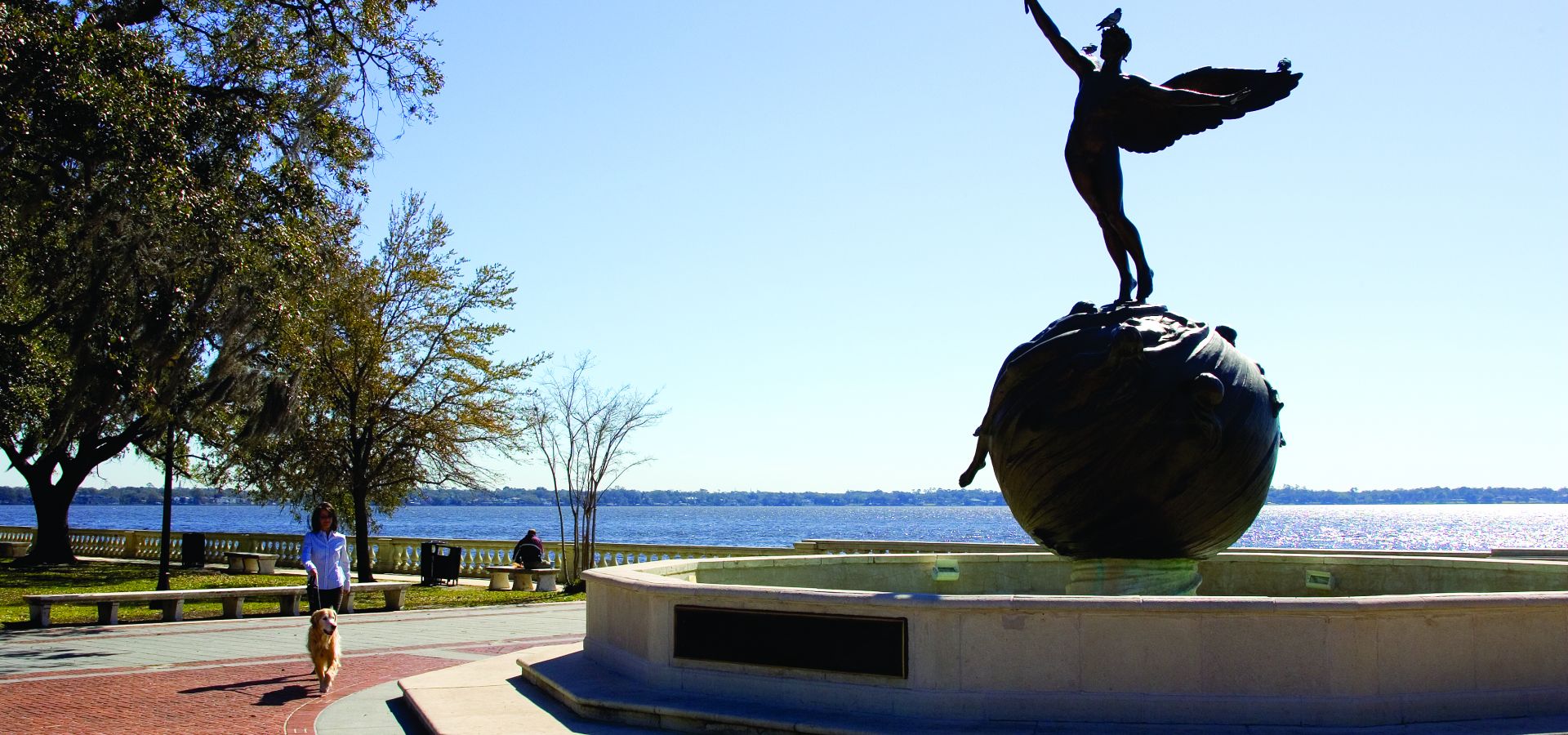
Jacksonville’s Parks and Recreation Department is in the headlines a bit more this summer than usual.
For one thing, there is a public safety crisis at parks, specifically those in Northside and Northwest Jacksonville.
For another thing, Council President Anna Brosche prioritized improving the park system in her inauguration speech.
And for still another thing, Brosche has discussed enlisting parks to remove Confederate monuments.
With all that in mind, the $44M Parks budget was of keen interest.
Among the interesting items in the budget: a $500,000 capital outlay for cameras and enhanced lighting in certain problem-plagued parks that are “in and around hot spots for crime.”
Another safety related item: five positions for Mayor Lenny Curry‘s year-round swimming lessons program.
Councilwoman Lori Boyer turned discussion to community centers, which she linked to public safety.
Boyer noted that the public library has become a “safe place” for kids to go to, supplementing community centers.
“To me, it’s an umbrella,” Boyer said, noting that there may be cost savings in ramping up community centers’ hours after cuts years back, instead of paying so much for third-party after school programs.
Six community centers are dormant. If they were open 2:30-6:30 M-F during the school year, and during the summer for twelve hours, the cost would be $288,000 total.
“We absolutely need this,” added Councilwoman Joyce Morgan.
While the enhancement wouldn’t be taken up Thursday, Boyer called the $48,000 price tag per center “pretty cost-effective” compared to other options. The facilities are still available for rental, and are therefore being maintained.
Boyer also suggested that libraries could be improved with money spent on after-school programs.
Councilman Reggie Brown discussed senior centers, noting the early close times for most of them, and urging that senior centers could serve a community center function. Brown noted that, in terms of youth crime, teen centers and programs may help. There are no standalone teen centers, but there are programs throughout the city.
“I’m prayerful that we don’t have youthful criminals — K-8. I’m concerned about the lack of focus on our teenagers,” Brown said. “If the seniors are leaving at one, we can start a teen center at these sites from 3 to 7 p.m.”
Dennis pressed Mousa and Curry administration members to find a way to create $288,000 of room in the Parks budget for the aforementioned community centers.
“I know you’re very sharp with the numbers,” Dennis urged.
“We will take on the $288,000 to open these community centers,” Mousa said, “but any other request during the year will be difficult to handle. There’s a lot of things that come up during the year … we can’t make this a practice, but we won’t object to that $288,000. It’s a good investment and we will put it in the Parks budget.”
Some caveats: part-time hours may be needed in addition to that $288,000. And some facilities may be too far away from schools to be useful for this purpose.
“There’s not one thing that can stop the issues we’re facing,” Parks Director Daryl Joseph said. But a combination of tactics could contribute to turning the tide against violence among the city’s young.
______
“We’ve had a number of violent incidents in parks. Some were drive-by. Some were in the parks themselves,” Councilwoman Boyer said, asking Joseph if they were safe.
Boyer also spotlighted vandalism in the parks, wondering how much was spent to clean up “criminal acts of vandalism.”
“If we’re spending a lot to recover that, it might make sense to spend up front to prevent it,” Boyer said.
Vandalism, Joseph said, eats up about 20 percent of the Parks capital budget: $300,000 to $500,000 a year. Activating the parks helps to take away the opportunity for vandalism, creating ownership for legitimate patrons. Security cameras are another fix.
“Something’s got to give. We’ve got to stop this,” Boyer said, citing sprinklers stolen the day after installation.
“So much of what we do is we are designing it so it can’t be vandalized … what you end up with is something that’s not very desirable. I hate it that we back into this. You go to other places,” Boyer said, citing the Tampa Riverwalk, “and it isn’t that way. Why do we have to take a back seat?”
Boyer suggested that security services to protect parks may be a viable option. “Park rangers” were also discussed.
___
It wasn’t all public safety though.
Huguenot Park is having issues. Sufficient revenue isn’t coming in. The subfund is underwater, consistently year over year. And a fix is months away for some of the more existential problems.
One such issue: the campground has been closed since Hurricane Matthew so people could drive through to access the park, but Parks expects to open the campsites and pavilions once the new road is built this winter.



